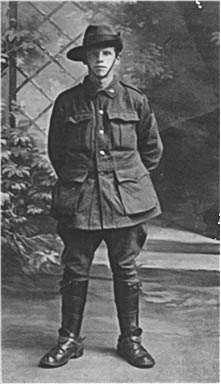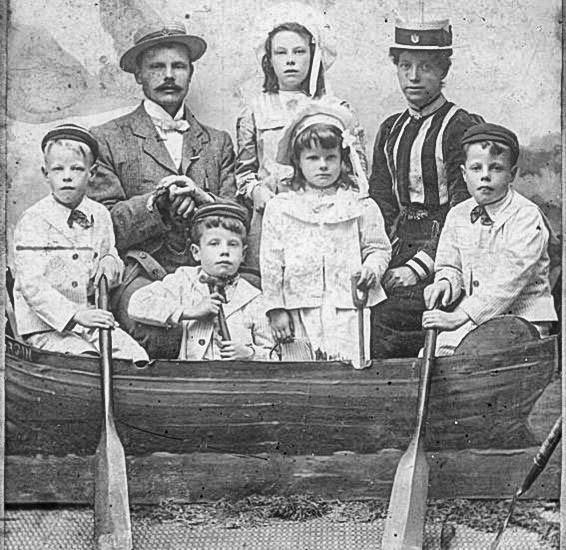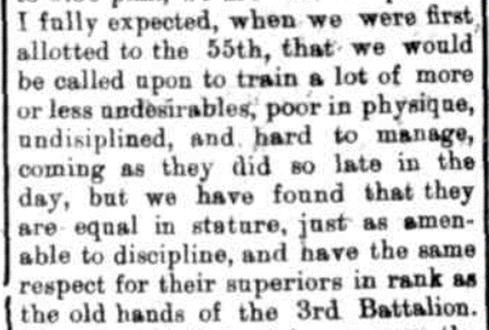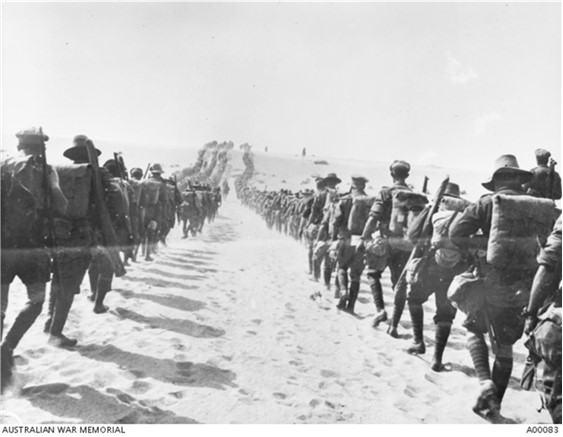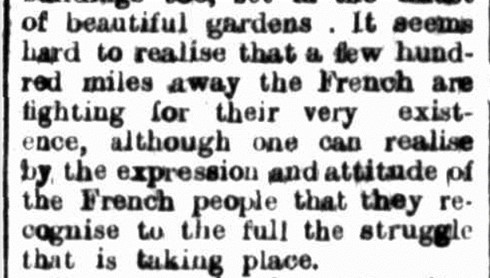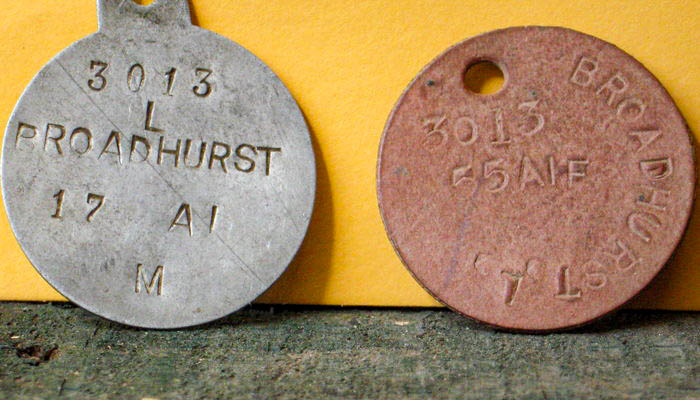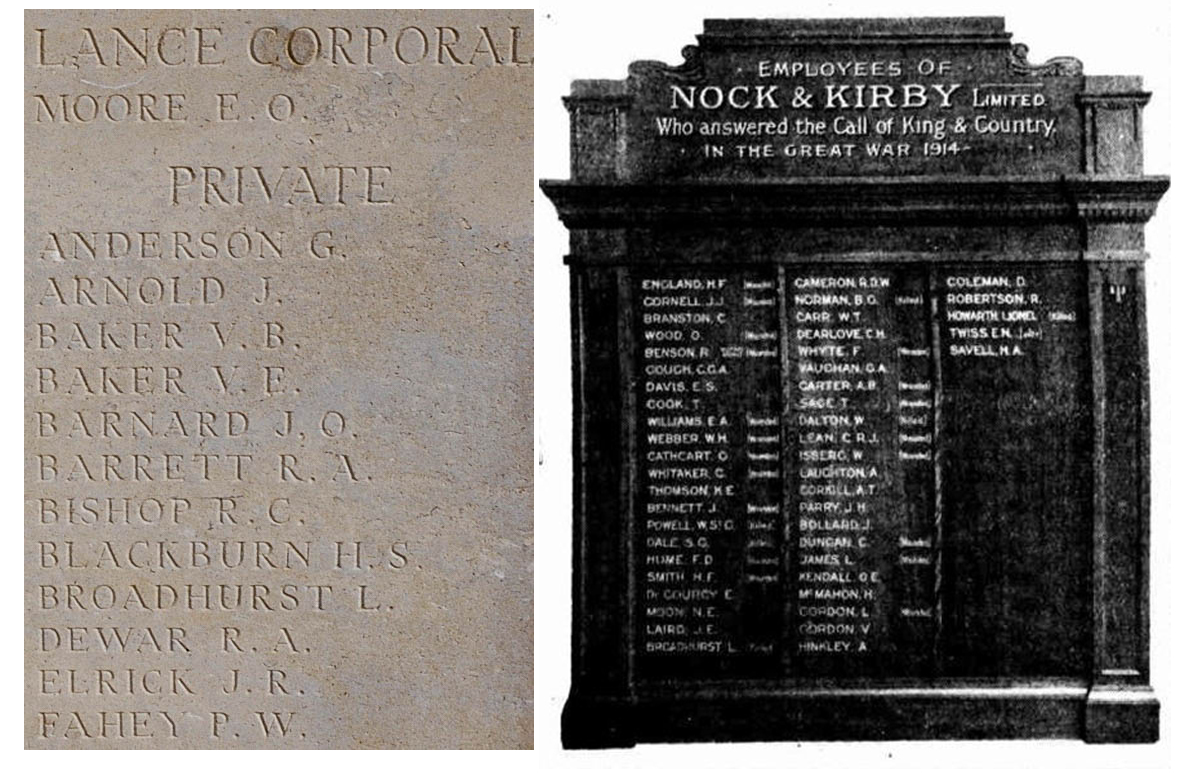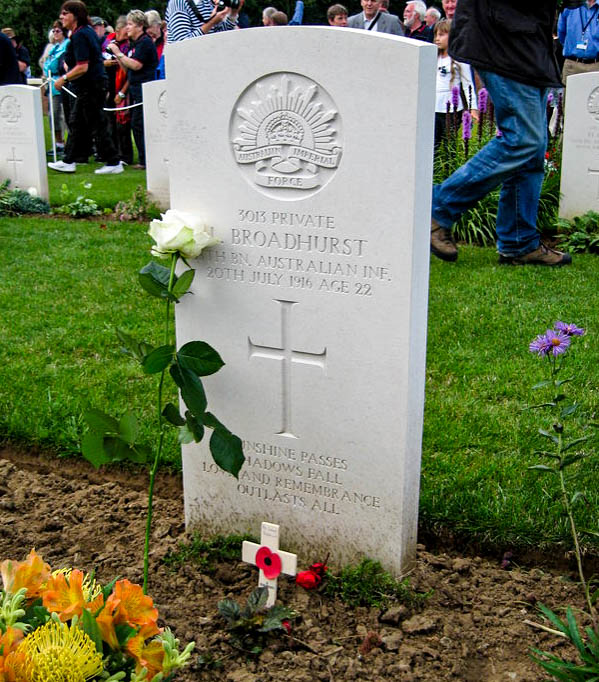Leonard BROADHURST
Eyes grey, Hair brown, Complexion fair
The Broadhursts – A Committed Family
With appreciation to Chris Clark for all of his efforts in the search to find his Great Uncle and for his detailed contributions to this story.
Early Life
Leonard (Len) Broadhurst was born on 2 January 1894 in Aston, Birmingham, England to Frederick William and Ada Eliza (nee Brittain) Broadhurst. He was the third of their five surviving children - Frederick (1891), Lavinia (1892), Len (1894), Bert (1895) and Maud (1896). Len’s brother Frederick is the only one who was given a middle name – Frederick Cornelius.
His father Frederick worked as a flame forger/iron worker and a blacksmith while in the UK. The family lived on Hollyfield Rd in the Sutton Coldfield area of Birmingham, per the 1901 UK Census. Leonard attended “Board School”, as the local schools were called at the time.
The Broadhursts emigrated to New South Wales, Australia in 1910 when Leonard was 17, settling in the Marrickville area of Sydney. When Len enlisted in 1915 they were living at 73 Garnet St, Dulwich Hill. After arriving in Australia, Len’s father Frederick did become a manufacturer and family recollections are that he provided wrought iron fencing panels for a memorial to WWI soldiers in Dulwich Hill. They still have garden seat frames made by him. Leonard found work as a salesman for Nock & Kirby, a Sydney-based retail store trading in hardware and general household goods.
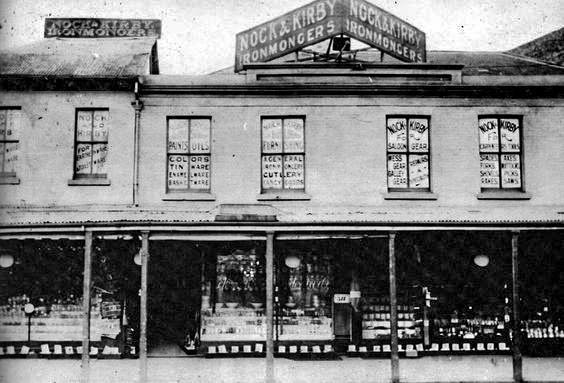
Off to War / Egypt
The Broadhurst males turned out in force to support the War effort. All three brothers enlisted AND their father Frederick served, but under an Australian Munitions Workers scheme to recruit skilled men to bolster munitions production in the UK. A total of 2,838 Australian volunteers worked in UK factories. Frederick went to England in 1916. The brothers were keen ensure they were all accepted - all three modified their birth dates by one year so that Bert, the youngest, would not attract attention due to age discrepancies. They were side by side - Bert (3011), Frederick (3012) and Leonard (3013).
They enlisted on 24 August 1915 and all were assigned to the 17th Battalion, 7th Reinforcements. They began their military training at the Liverpool Camp and departed for the month-long trip to Egypt on 23 December 1915 from Sydney, New South Wales on board HMAT A29 Suevic. With the return of the soldiers from Gallipoli and the large influx of new recruits from Australia, major reorganisations were underway and in February the boys were transferred to the newly formed 55th Battalion. Roughly half of its recruits were Gallipoli veterans from the 3rd Battalion, and the other half were reinforcements, predominantly from New South Wales. Fred, however, was diagnosed with endocarditis and shipped home. The new recruits seemed to fit in well with the veterans.
After six weeks of training at the Tel el Kebir camp they had a three-day march to get to Ferry Post for further training and guarding of the Suez Canal. As they marched out they were reviewed by H.R.H. the Prince of Wales.
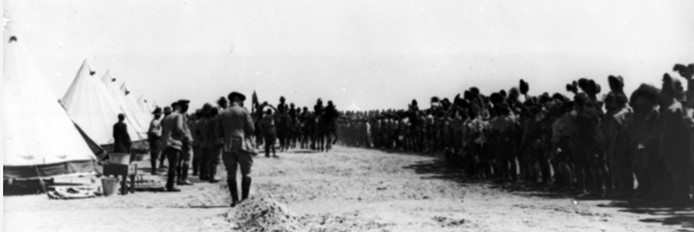
The trip was a significant challenge, however, marching over the soft sand in the 38°C heat with each man carrying their own possessions and 120 rounds of ammunition. When they got to Ferry Post they were rewarded with a swim in the Nile.
Len and Bert were separated in May, as Bert was transferred to the 14th Brigade Training Battalion. He remained in Egypt until late July 1916 and rejoined the 55th in France in late September. Life for the soldiers was hard, but in early June a ‘Smoking Concert’ was ‘attended by a very vociferous but well conducted crowd of men.’ and on 14 June there was a Divisional Sports Contest.
Source Australian War Memorial 55th Battalion War Diary 23/72/4 June 1916 page 3
To the Western Front and Straight Into Battle
On 19 June Len began his move to the Western Front, heading to Alexandria to board the HMT Caledonia . They left on 22 June and after a short stop in Malta arrived in Marseilles on the 29th. From there they were on trains for a three-day train ride to Thiennes, 30 km from Fleurbaix, and finally a chance to see what they were fighting for.
Training continued, now with practicing for a gas attack added in. They then marched to Estaires on the 9th July and were into the trenches for the first time on 11 July. A fellow soldier from the 58th summed the situation up well in his memoirs, ‘What have I let myself in for?’
Source Bill Boyce (3022) Australian War Memorial Collection C386815
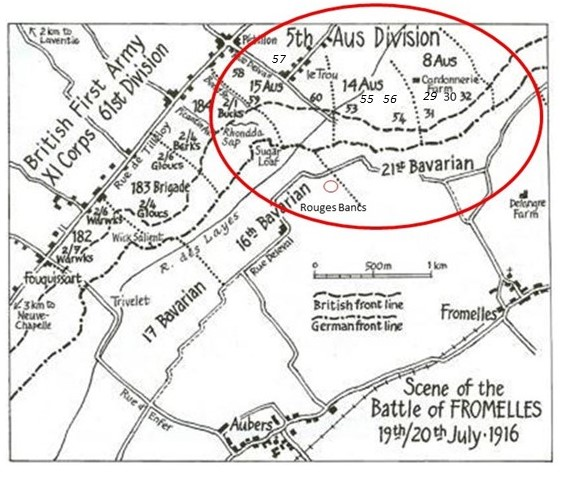
On the 16th July, the 55th were carrying supplies, readying for an attack the next day, but that was postponed due to the weather. Heavy bombardment was underway from both armies by 11.00 AM on the 19th July and by 4.00 PM all were in position for the battle. The main objective for the 14th Brigade was to take the trenches to the left of a heavily armed, elevated German defensive position, the ‘Sugar Loaf’, which dominated the front lines. If the Sugar Loaf could not be taken, the Australians would be subjected to murderous enfilade fire from the machine guns and counterattacks from that direction.
As they advanced, they were to link up with the 31st and 60th Battalions. The 55th’s role was to provide support for the attacking 53rd and 54th Battalions by digging trenches and providing carrying parties for supplies and ammunition. They would be called in as the ‘third battalion’ if needed for the fighting. As the battle began, C & D Companies’ carrying parties were in position 300 yards from the front line and Len’s B Company and A Company were ready to move after the first waves of the 53rd and 54th had gone forward. The 53rd and 54th went on the offensive from 5.43 PM. They did not immediately charge the German lines, but went out into No-Man’s-Land and laid down, waiting for the British bombardment to lift.
At 6.00 PM the German lines were rushed with 55th C & D Company’s working parties following in support. There was heavy artillery, machine gun and rifle fire, but they were able to advance rapidly. However, within the first 20 minutes the 53rd lost ALL the company commanders, ALL their seconds in command and six junior officers.
Source AWM C E W Bean, The AIF in France, Vol 3, Chapter XII, pg 369
At 7.24 PM the remainder of the 55th battalion moved to the front lines but were ordered to not leave their front line. Not long after, however, help was needed and at 8.55 PM, A Company was into the fighting to support the 53rd and Len’s B Company to support the 54th. They were able to move forward with few casualties. The 53rd and 54th were able to link up with the 31st and 32nd, occupying a line from Rouges Bancs to near Delangre Farm. By 10 PM all of the 55th were past the front line.
As they advanced, they found that their right flank was not protected by the 15th Brigade, who had not been able to progress due to the devastating defences at the Sugar Loaf. The 55th tried to shore up their flank defences, but:
“The Huns knew the country and trenches so perfectly that they succeeded time and again in bombing us back.”
Based on a witness statement from Private A.V. Watts (3948), Len was shot in the head around midnight/early morning while they were digging a communication trench. Multiple witness statements confirm that Len was not killed instantly, but called out for help and asking if they were going to leave him there. Stretcher bearers were able to treat his wounds and he was moved him to a ‘safe’ place in a nearby shell hole to be recovered later, but the advances of the Germans meant that he ultimately had to be left behind.
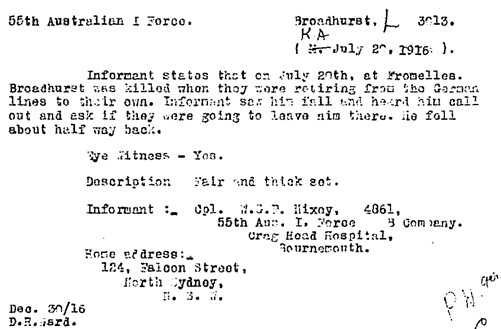

The battle raged on. At about 3.00 AM some ‘foolish orders’ were circulated that they were being bombed by their own side and were supposed to retreat. These were believed to be incorrect and they continued to fight.
At 4.15 AM about 50 men of the 55th were ordered back to their own front line to defend against a rearguard action as the Germans were coming in from the exposed right flank:
“It was due to the very fine actions of these men that the garrison was able to get across No Man’s Land with comparatively few casualties.”
By 9.30 AM the Brigade had ‘retired with very heavy loss’.
Source AWM4 23/14/4 14th Brigade July 1916 page 7
The artillery finally ceased at noon. The Commanding Officer of the 55th, Lieutenant Colonel D. M. McConaghy spoke proudly of his men:
“The losses were heavy, but the battalion, four-fifths or more of whom were strangers to battle, acquitted themselves honorably in its first engagement, and returned with 40 German prisoners.”
For a battalion that was to be in reserve as the ‘third battalion’, the initial count at roll call was 42 killed or died of wounds, 154 wounded and 143 missing. Ultimately the impact was that 84 soldiers were killed or died from wounds, but of this total, 46 were missing/unidentified, including Len.
After the Battle
Len was not at roll call and was declared as ‘Missing in Action’. The family were notified, but with the scope of the battle, further information was scarce, even for months afterwards. Len’s brother Bert and his Father were posted in England at the time and they were advised early. As in the Red Cross statement below, Bert, enthusiastically, went and got permission to rejoin the 55th and was in France by the end of September 1916.
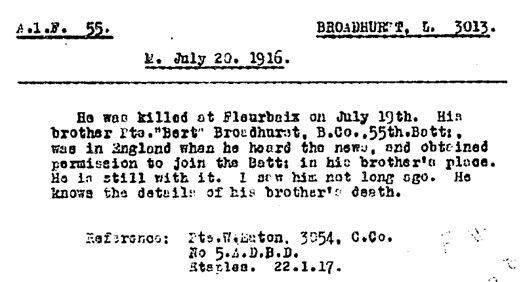
There were many witness reports about what happened to Len and most were fairly consistent, but one even advised that he was buried near Fleurbaix two weeks after the battle. The truth was that Len’s name was on a German Death List as of 9 September 1916 and they had his ID discs, so they were the ones to have recovered his body. While there were words that said he was a Prisoner of War, they also said he died on 20th July.
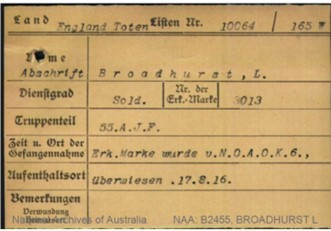
He was formally declared as being Killed in Action on 24 November 1916. His ID discs had been returned by the Germans and were sent to the family in January 1917.
Luckily for Bert, the 55th were in the advance that followed the German retreat to the Hindenburg line in 1917, but they were not directly engaged. Bert became a Driver in August 1917. He returned to Australia in March 1919. Len’s father returned to Australia in February 1918. Len was awarded the British War Medal, the Victory Medal and a Memorial Scroll and Memorial Plaque. He is commemorated at V.C. Corner (Panel No 11), Australian Cemetery Memorial, Fromelles and was commemorated on the Nock and Kirby Limited Honour Board and at Menin Gate.
Gone, but Not Forgotten – the Search for Len
The family placed ‘In Memoriam’ notices in the newspapers every year from 1917 to 1941 - Len was clearly not forgotten.
After 25 years of memorial notices and many years later, the memory of Len was rekindled by Len’s niece and her son Chris Clark’s efforts to find Len. Chris’ story is below:
WHERE WE STARTED
My Mum Joan was an avid reader of the Sydney Morning Herald and she rang me one day to tell me about an article she had seen about Lambis Englezos’ investigations about a possible mass grave near Fromelles. I suspected that she knew more than she was telling me.
My Grandpa McCallum married a Broadhurst, so off I went chasing all the Broadhursts I could find. The War records revealed that my Great Uncle Len had been killed in action at Fleurbaix in July 1916, but had remained missing in action.
I had been sporadically researching the family tree on my Dad’s side since 1966 when we got his English family tree and some other interesting artefacts, but now began a long period ramping up my efforts to get the Broadhurst family tree sorted. Mum was very helpful and could provide some background information and colour to the often bland, factual records.
I seem to recall that the next step was the recognition of Lambis’ work and the publication of a list of ‘possible’ soldiers, which included Uncle Len, whom may be buried at the site.
With this and my own research in hand, we registered with the Project and then set about tracking down appropriate relatives for possible DNA contributors.
THE LIGHTBULB MOMENT
While digging through the family details, the real ‘lightbulb moment’ for how important the search was came after seeing a video documentary on Peter Barton’s book ‘The Lost Legions of Fromelles’.
In this video, there is a point where a map comes up and there are four soldiers identified by name, serial number and Battalion - and my Great Uncle Len’s name is on the map. He was found by the Germans in the vicinity of the Cobbers Statue in the Australian Memorial Park.
We now had a name and a place, so he really could be one of the soldiers in the grave!
I had now built up all the family tree data, so I knew who everybody was and where they all fitted, but our serious problem was WHERE were all these people?
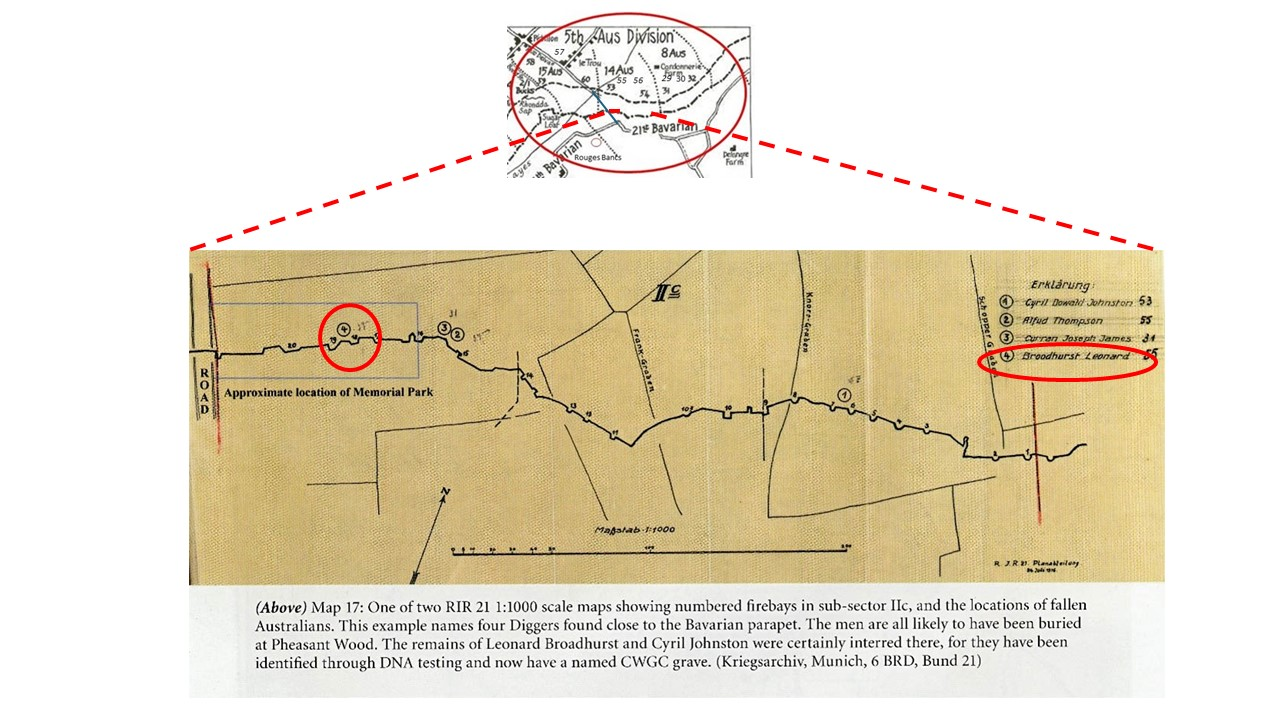
FINDING THE ‘RIGHT’ FAMILY MEMBERS
In order to prove Len was in the grave, we needed both direct family female to female to female and male to male to male’s relations, which is harder to do than it sounds.
The Unrecovered War Casualties (UWCS) were helpful at this time (2009-11) in identifying that, whilst we had strong mitochondrial DNA links identified, we needed a direct male DNA linkage (back to Len, therefore to his father/brothers and their sons) if we were to have any success in achieving a match.
Complicating this was the fact that our branch of the family had moved from Sydney in the early 1960’s so the knowledge of Len’s brothers Fred and Bert had been well and truly stretched.
Mum had a faint memory that one of the male Broadhurst descendants had moved to Central Coast area of NSW.
There were two people listed on White Pages in the seemingly relevant area and correct initials. She rang and first person and ‘bingo’ a match!
The relative was the son of Len’s brother, Fred, so he was an important contact in the DNA chain. Unfortunately, by early 2010 when we made contact with him he had been diagnosed with terminal cancer and provided only limited support/information.
He indicated that he had a son and daughter but no further details were provided. In late 2010/early 2011, I attempted to contact him again, but found the previous details were inactive. As a last resort, I decided to canvass local Funeral Directors to determine his fate. I discovered that he had passed in October 2010 so in April 2011, I sent a document outlining my need to contact the relatives of the deceased to them with a request to pass it on.
Like all good movies, it had a happy outcome, but it would take another 6 months.
In response to the letter to the Funeral Directors, the son contacted me in May 2011 with what I would call a guarded response. He indicated an interest in the process but did not seem ready to assist.
Not wanting to miss the opportunity, I asked if he knew of any of the other members of the Broadhurst family (Len’s other brother Bert). In Jun 2011, he provided some details re marriage and birth/death dates of his side of the family, but was unable to provide anything on the other branch of the family, so he was the critical link. I still sensed a reluctance to participate.
About this time, I also received an email from the daughter, she was more than willing to assist. I suspect she may have been instrumental in getting the son over the line to donate DNA.
I made a final plea to the son in Oct 2011 and he finally agreed to participate, so all contact information for this critical donor was passed to the Unrecovered War Casualties Section (UWCS) to co-ordinate the DNA side of the process.
By early 2012, a further check with UWCS revealed they had three DNA donors, now the wait for results.
THE NOTIFICATION
We were at my nephew’s wedding in March 2012, (a Saturday) and the phone was on silent, but my leg vibrated. Not recognising the number, I picked up the call to be greeted by - ‘It’s Brian Manns from Defence UWCS…..’.
I’m afraid I lost it on the spot – Uncle Len had been identified!
THE DEDICATION OF THE GRAVE
I held off telling Mum for a couple of days while everything ‘sank in’. She had obviously been following things and a few days later I got a phone call – I’d like to go to Fromelles!
We booked a Western Front Battlefields Tour which would put us in Fromelles on 19 July 2012.
Unbeknownst to the family, Matt McLachlan Tours had arranged a wreath for us, to be laid at the rededication ceremony. The family agreed that my daughter, Suzanne, would actually lay the wreath as she had been the one that made all the travel arrangements, etc. Without her, we would not have been there! I also recall that there was a comment made that we could now lay Grandma Broadhurst’s mind to rest - her son's resting place had finally been located.
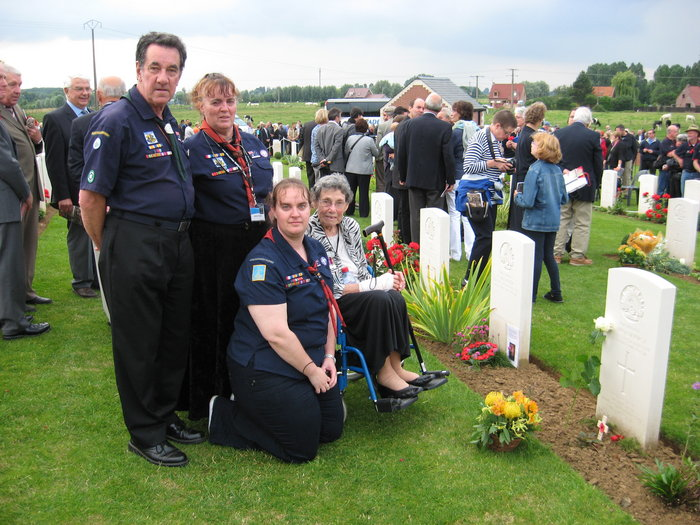
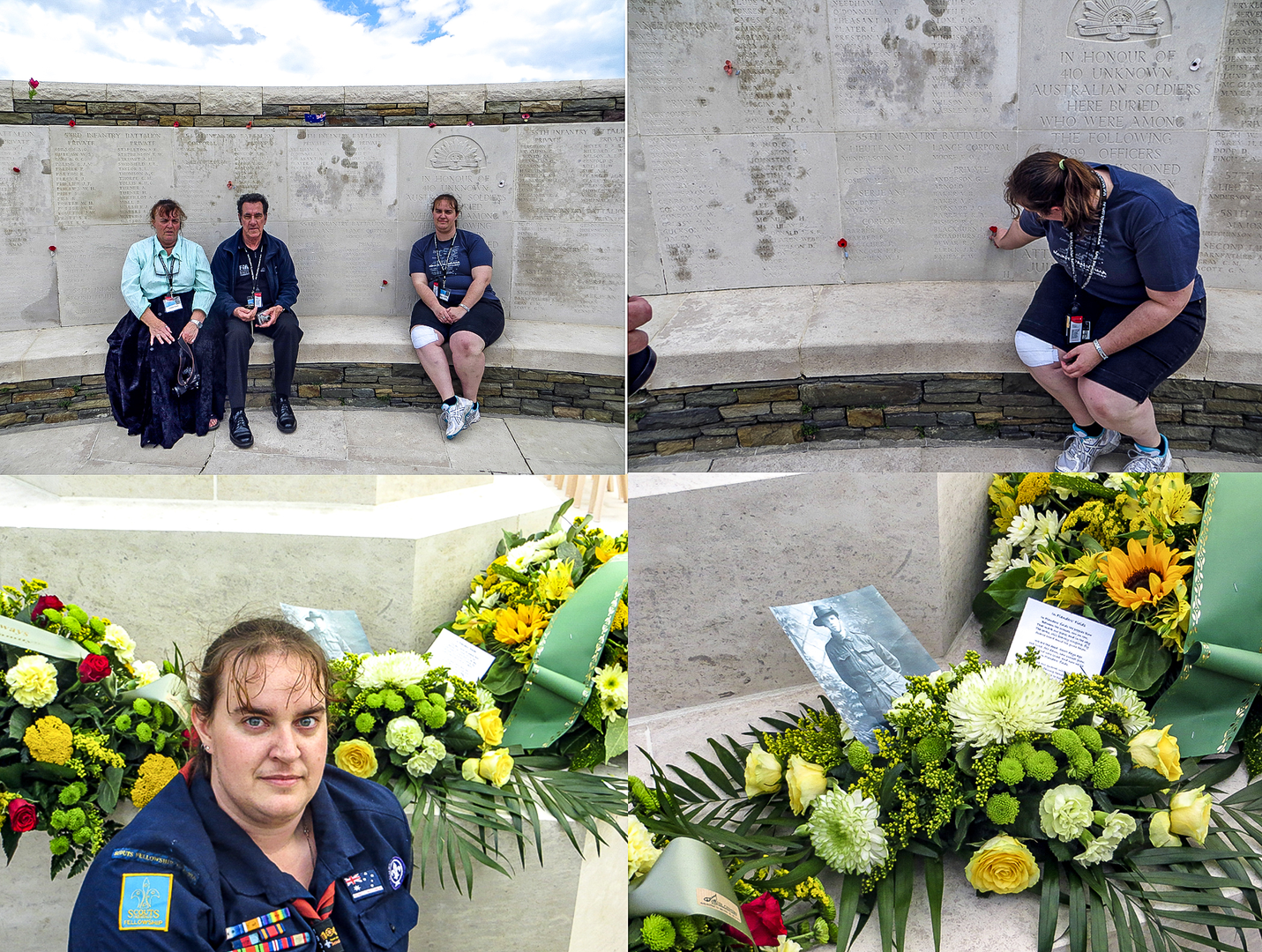
Memory is never more alive than when it brings people together as it does this evening, from beyond borders and beyond generations
(Len’s) is one of the many stories of courage and sacrifice told here at the Australian War Memorial. We now remember Private Leonard Broadhurst and all of those Australians who have given their lives in service of our nation.
Source https//www.awm.gov.au/collection/C2091615
In researching Uncle Len, I found an ‘In Memoriam’ notice every year from 1917 to 1941 lodged by the relatives of Len. The 20 July 1921 notice stood out and that is what is inscribed on the headstone:
SUNSHINE PASSES
SHADOWS FALL
LOVE AND REMEMBRANCE
OUTLASTS ALL
Like many of the Fromelles relatives, I never knew Uncle Len, but the sadness and the hurt that his family felt came through in the letters from his mother to Army, seeking the whereabouts of her son. It has been a fascinating tale of discovery.
The Fromelles Association would love to hear from you

Contacts
(Contact: carla@fromelles.info or geoffrey@fromelles.info).
(Contact: army.uwc@defence.gov.au or phone 1800 019 090).
Donations
If you are able, please contribute to the upkeep of this resource.
(Contact: bill@fromelles.info ).
